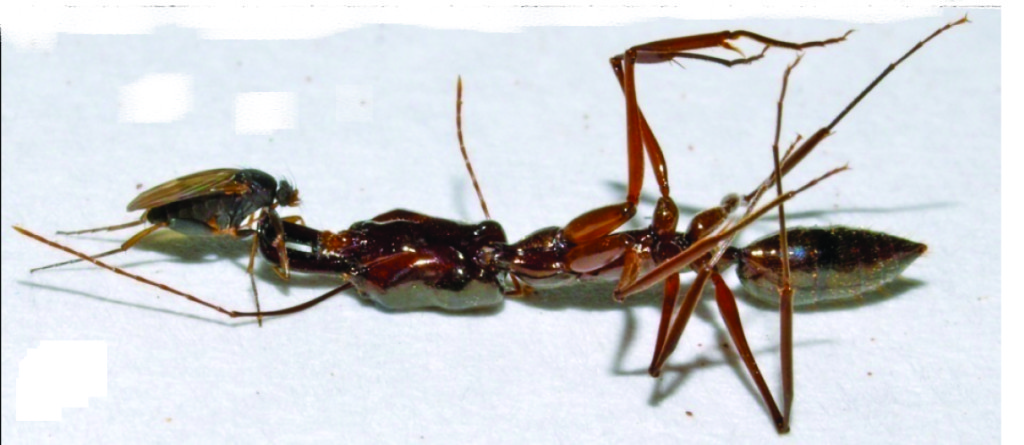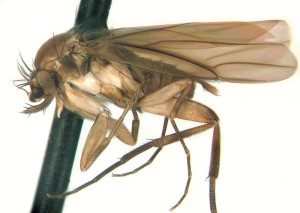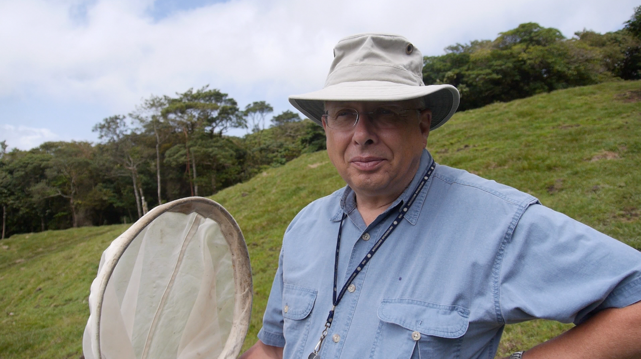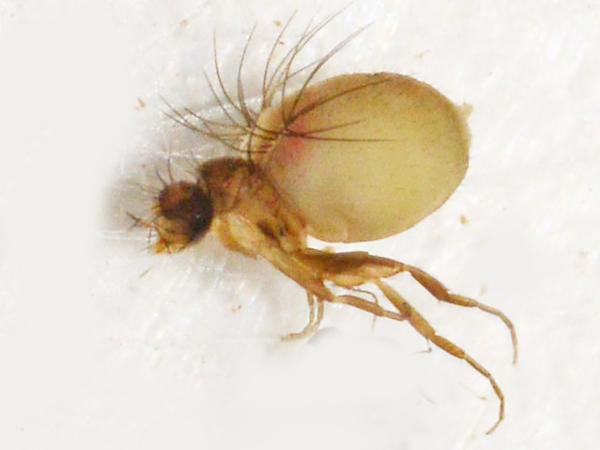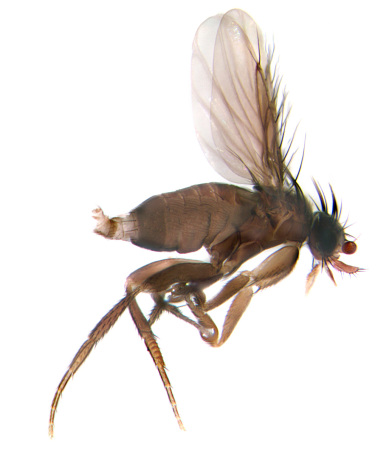With the COVID-19 pandemic, many of us are working at home, instead of in the field. In spite of this, I think that I have made a taxonomic discovery that is important for phorid classification.
My friend, Lonny Coote, recently wrote to me, saying he would help me with some entomological questions if I “describe[d] a second species of Cootiphora”, a genus I described and named for him in 1993. Since then, the genus Cootiphora has languished in obscurity. I have seen only three specimens: the holotype from Tinalandia, Ecuador, a second specimen from La Selva Biological Station, Costa Rica, and a third specimen from Bastrop State Park, Texas (near Austin).
The genus Cootiphora is known only from these three female specimens. They are extremely distinctive because of their cockroach-like, limuloid body form, their reduced, triangular wing rudiment, and their pointed, parasitoid-type oviscape.

The holotype was collected (as the label states) on “the clubhouse windows”. Tinalandia was (is?) a golf course with some nice forest on the property that makes it a popular place with naturalists. It was on my first trip to the tropics, accompanied by Lonny Coote, John Acorn, and Jane O’Donnell, that I visited this resort and received the kind hospitality of Tina herself. One day, army ants (Eciton burchellii) invaded the clubhouse, and the windows were rife with flies associated with the ants. I had a great time collecting numerous phorids on that day, much to the chagrin of Lonny, who saw one of the wasps that he worked on during the first day of that trip, and not a single one thereafter. Amongst those phorids was the little female fly that I later described and named for him. I always assumed that it was associated with the army ants, but of course had no evidence of this.
Coote’s demand that I “describe a second species of Cootiphora” prompted me to look at the specimens I had gathered from Bastrop, Texas, just for fun. In doing so I noticed another peculiarity about the Bastrop fauna- I had described a new species of an unusual tropical genus known only from males from this park. Finding these flies, which I named Macrocerides (Tauricornis) taurocephalus, the name referring to the bull-horn like antennae of the males of all species in this subgenus. In my Macrocerides paper, I described two new species, one tropical (M. (T.) borkenti) and one nearctic (M.(T.) taurocephalus). I had never put this association together in my mind, but it seemed provocative that I would find these two tropical flies, one known only from males, and one only from females, at this site in Texas.
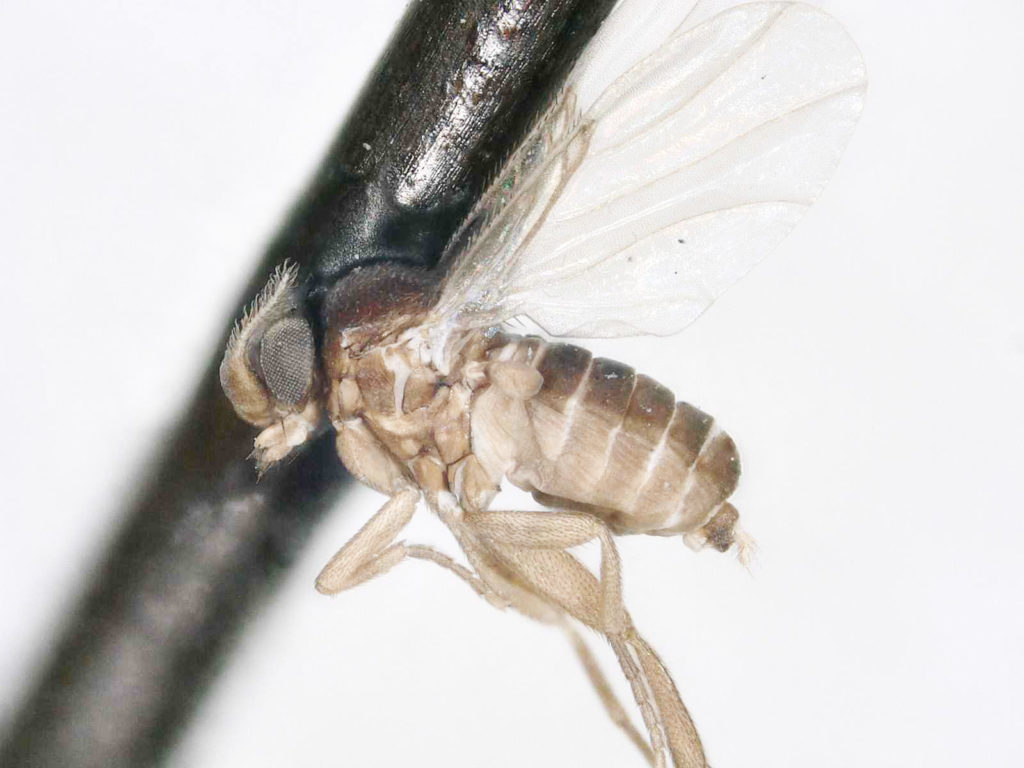
There was one thing left to check: I looked through the prepared, mounted, labelled material from that day in the clubhouse at Tinalandia, and found, to my delight, a single male specimen of M.(T.) borkenti.
Of course, this is still speculation, but if true, I would consider M.(T.) borkenti to be a synonym of Cootiphora angustata (the type species of Cootiphora); at least the subgeneric name Tauricornis to be a synonym of Cootiphora; Macrocerides (Cootiphora) angustata.
But wait, there’s more! Among the material I treated in my Macrocerides review were two further species, M. abaristalis Borgmeier from Costa Rica and M. attophilus Disney from Argentina. Both of these might be further species of Cootiphora, but most interesting is the latter, which was collected in association with leaf-cutter ants. This is significant, because one of the most distinctive things about the Bastrop State Park site back in Austin, Texas, is the large number of Apocephalus wallerae specimens also in the Malaise trap samples. This species is a parasitoid of Atta texana, whose colonies are common in the area (according to Alex Wild of the University of Texas, Austin, who kindly corresponded with me about this). Thus we have another hint of where to look for further Cootiphora specimens- in association with this leaf-cutter ant.
Finally, I have some serious reservations about the monophyly of genus Macrocerides, discussed in my review of the genus. There is little to link the type species, M. curtifrons Borgmeier, with the species of subgenus Tauricornis, other than the moderately modified antennae. If further research indicates that these species are not closely related to M. curtifrons, we will be free to use Cootiphora as a full genus name again, something that I think would please my friend. At any rate, I think I have fulfilled his request: I speculatively have “found” not one, but two more species of what would be subgenus Cootiphora!



 There is no question that this 1.5 mm long fly is well-named: the male genitalia are a shocking white in comparison to the rest of the rather dingy brown body. It was described in 1910 from England, and is well-known from other parts of the world such as Finland, Israel, and China. It is also found in the two big fly inventories that I am part of: the Los Angeles County Natural History Museum’s urban biodiversity project called “BioSCAN” and the Costa Rican “ZADBI” project in a tropical cloud forest.
There is no question that this 1.5 mm long fly is well-named: the male genitalia are a shocking white in comparison to the rest of the rather dingy brown body. It was described in 1910 from England, and is well-known from other parts of the world such as Finland, Israel, and China. It is also found in the two big fly inventories that I am part of: the Los Angeles County Natural History Museum’s urban biodiversity project called “BioSCAN” and the Costa Rican “ZADBI” project in a tropical cloud forest.